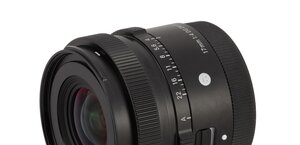Olympus M.Zuiko Digital 12-50 mm f/3.5-6.3 ED EZ
3. Build quality
In the photo below the Olympus 12-50 mm is positioned next to the Panasonic G X VARIO PZ 14–42 mm f/3.5–5.6 ASPH. P.O.I.S. and the Olympus M.Zuiko Digital 45 mm f/1.8.
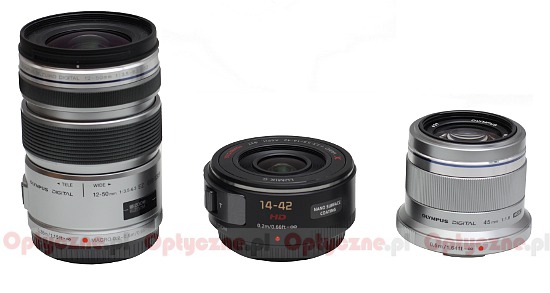 |
Please Support UsIf you enjoy our reviews and articles, and you want us to continue our work please, support our website by donating through PayPal. The funds are going to be used for paying our editorial team, renting servers, and equipping our testing studio; only that way we will be able to continue providing you interesting content for free. |
- - - - - - - - - - - - - - - - - - - - - - - - - - - - - - - - - - - - - - - - - - - - - - - -
The tested lens starts with a metal mount with contacts which surrounds a rear element, immobile and 23 mm in diameter. The part featuring contacts has also an inscription “Made in China”.
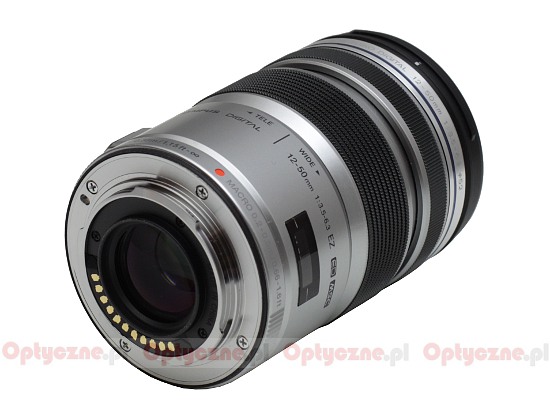 |
The proper casing of the lens is covered by plastics – silver when it comes to our specimen but Olympus offers you also a version in black. The first part of the casing is a narrow, immobile and partially ribbed ring with a red dot which makes attaching to a body easier, some parameters and a serial number.
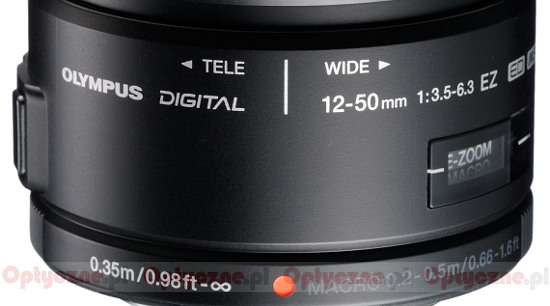 |
The next smooth part of the casing is 23 mm wide and contains several important features. Looking from above you can see an inscription with the name and parameters of the lens and some arrows labeled “TELE” and “WIDE” which indicate what direction you should turn the zoom ring. On the right you can see a notice informing you whether the zoom ring works in the electronic or manual mode. On the left there are two buttons marked as “L-Fn” and “MACRO”. The first one locks the autofocus. The producer claims it is the first PEN lens with a new “L-Fn” which is supposed to prevent setting the wrong focus by a camera. If suddenly something appears between the lens and the recorded object it is enough to press that button and the autofocus will be temporarily frozen until the obstacle moves outside the frame. The “MACRO” button, as its name indicates, activates the macro function – in case of this lens you can count on the magnification ratio as high as 0.36x.
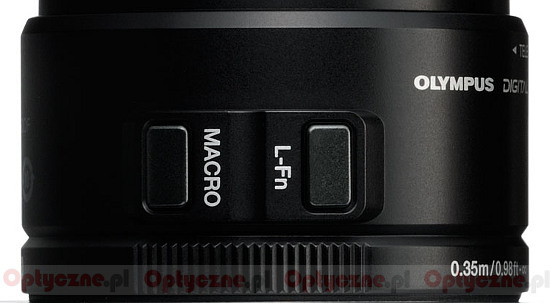 |
The next casing part is a zoom ring, about 2 cm wide, ribbed and with two working modes. When you shift this ring towards the mount you work in a classic manual mode. When you shift it towards the front element you switch to an electronic mode which ensures movie and still compatible focusing mechanism change. In the manual mode the ring works well and running through the whole distance scale takes a turn through about 90 degrees.
The zoom ring cooperates with different bodies in a different way. For example on the E-PL1 you can’t see any focal length marking displayed on the screen, no matter what mode you use. In the case of the Panasonic GX-1 there is no information concerning the focal length only if you work in the manual mode. When you move to the electronic mode you can see a focal scale on the screen and the actual focal length value without any problem.
Later on you find a manual focus ring. When a camera is set on the autofocus mode and you move the ring there are no changes whatsoever. When you choose the manual mode, the movements of the ring enlarge the image on the screen and you can set the sharpness manually with a great precision. The ring is less than 1 cm wide and in its centre there are rubber ribs.
There is a second, immobile ring right behind the manual focus ring, which is made of metal and features the name and parameters of the lens. A hood thread comes out of it which is surrounded by a motionless filter thread with a diameter of 52 mm, and a front element, also immobile, which is almost 34 mm in diameter.
The optical construction of the lens is not complex for a zoom instrument with such a range. We deal here with 10 elements positioned in 9 groups. Compare that for example with the fixed-focal Olympus M.Zuiko 2/12 which features as many as 11 optical elements. The Olympus company wasn’t stingy with special elements though. In the 12-50 mm model you can find two aspherical elements, one dual aspherical (DSA – Dual Super Aspherical) element, one element made of low dispersion ED glass and one element with a high refractive index (Super HR). Inside you can also find an aperture, which can be closed up to a value of f/22 but featuring only five diaphragm blades.
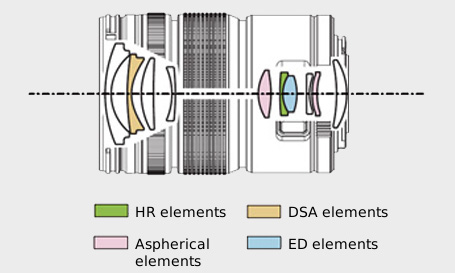
Buyers get just two caps in the box. You can purchase a hood separately.
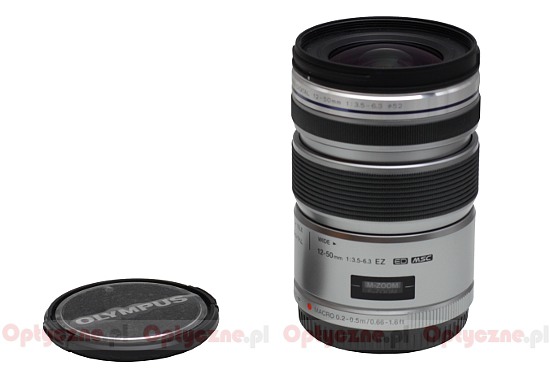 |
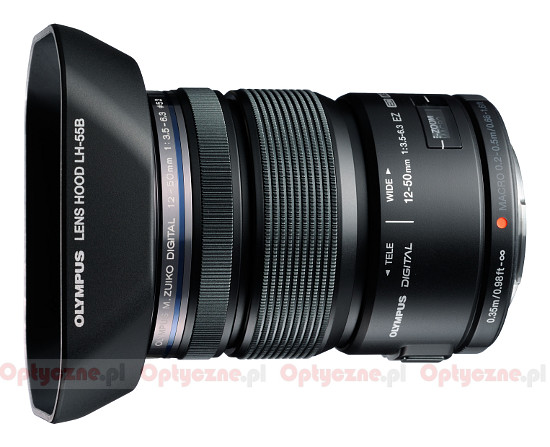 |





